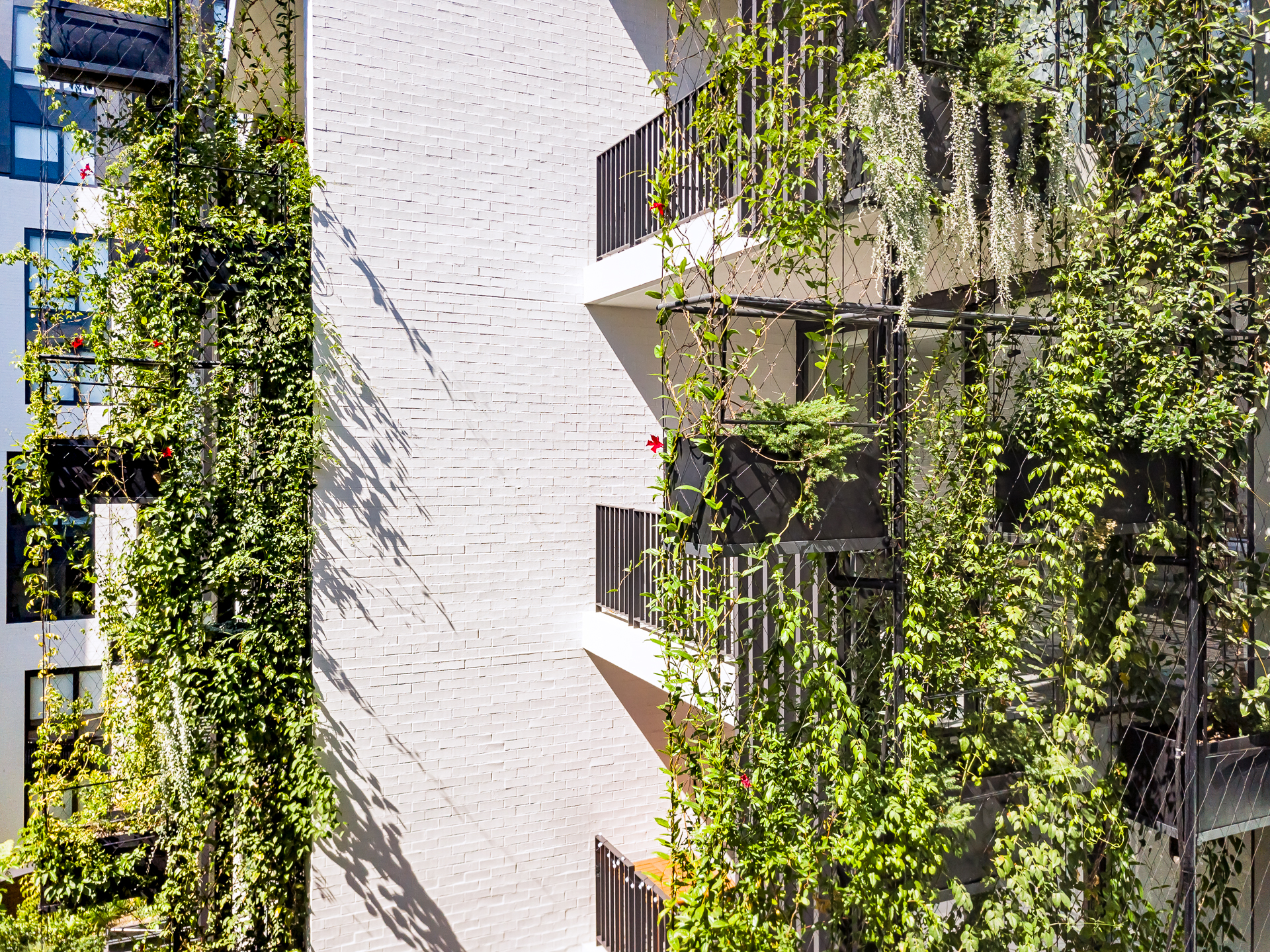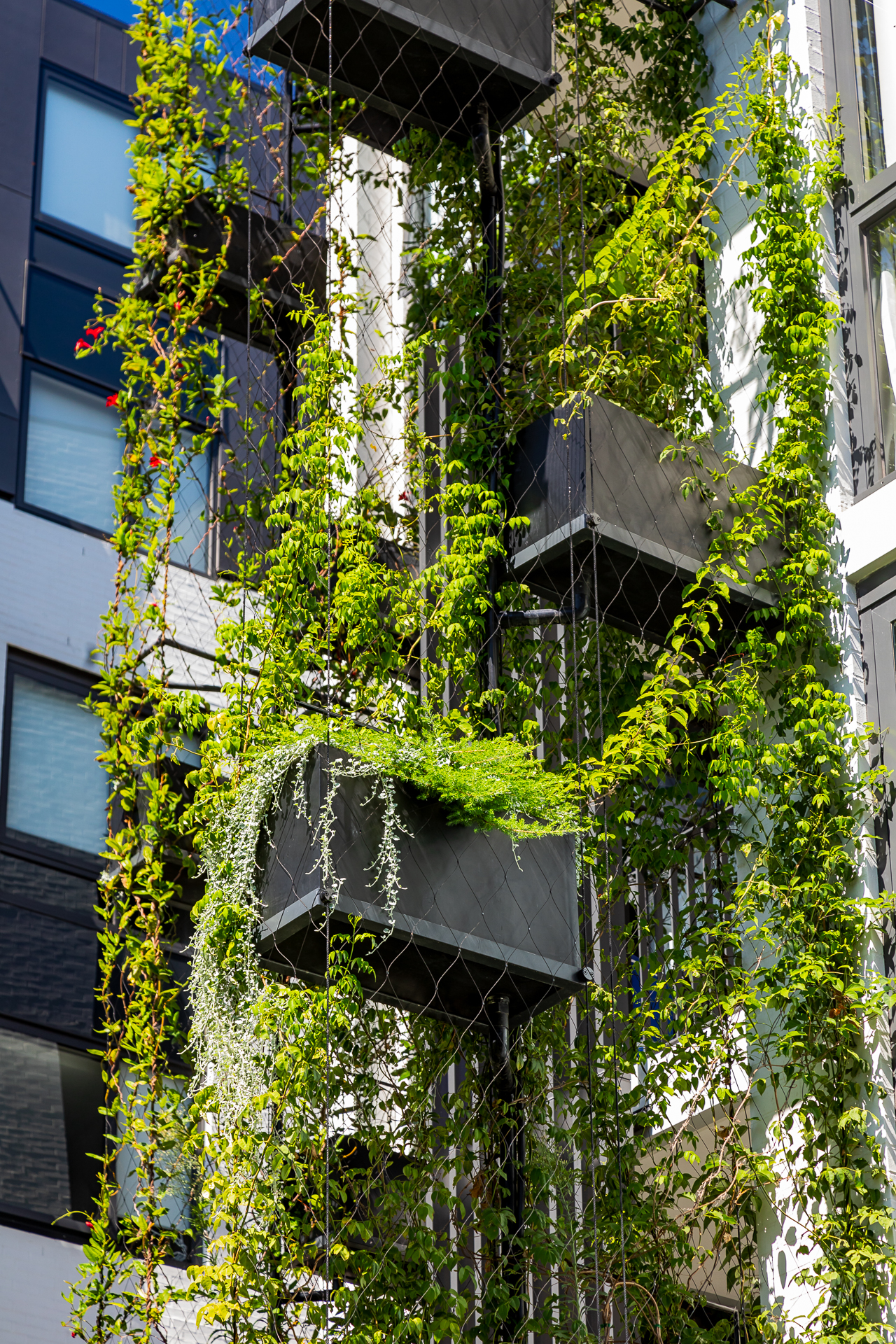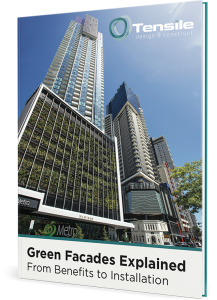In some green infrastructure projects, waterproofing treatments might be necessary to prevent damage to the building and prolong the life of the installation.
However, some myths about waterproofing for green walls and facades persist. Let’s take a look at three of them.
1. All green walls and facades need waterproofing treatments
Waterproofing requirements depend on the individual project.
For example, if there is an air gap between the wall and the planting system in a green wall, waterproofing is usually not required. The gap prevents water contact with the building as well as mould growth.
Green facades rarely require waterproofing either, because they sit outside the building envelope.
Some building materials are also sufficiently waterproofed in themselves – thick preformed concrete and marine-grade plywood for example – making extra treatment unnecessary.
2. A pre-formed membrane is the only waterproofing option
In projects that do require waterproofing, a pre-formed membrane is often used. For example, the One Central Park installation has a membrane to waterproof the felt system.
However, there’s a range of waterproofing technologies available for green infrastructure projects. These include liquid-applied treatments of modified bitumen, polymer cement or polyurethane acrylic. There’s also integrated waterproofing measures such as the inclusion of additives in concrete mix.
In some green wall projects, the application of waterproof paint may be enough to provide the necessary protection.

3. Waterproof membranes are prone to leakage and failure
According to the City of Sydney, a perception study shows a persistent belief that membranes are inclined to leak. This is despite decades of improvements, advancements, testing and proven capabilities.
While they have had a tendency to leak in the past, today’s waterproof membranes are very effective and must comply with very stringent Australian Standards for both external and internal wall use.
Finally, if a waterproofing treatment is applied in a green infrastructure project, it’s important that it is well-maintained to prevent leakage. Contractors need good access in order to carry out repairs and maintenance tasks.
If you wish to know more about waterproofing treatments for green walls or facades, please get in touch with us for a discussion.






































